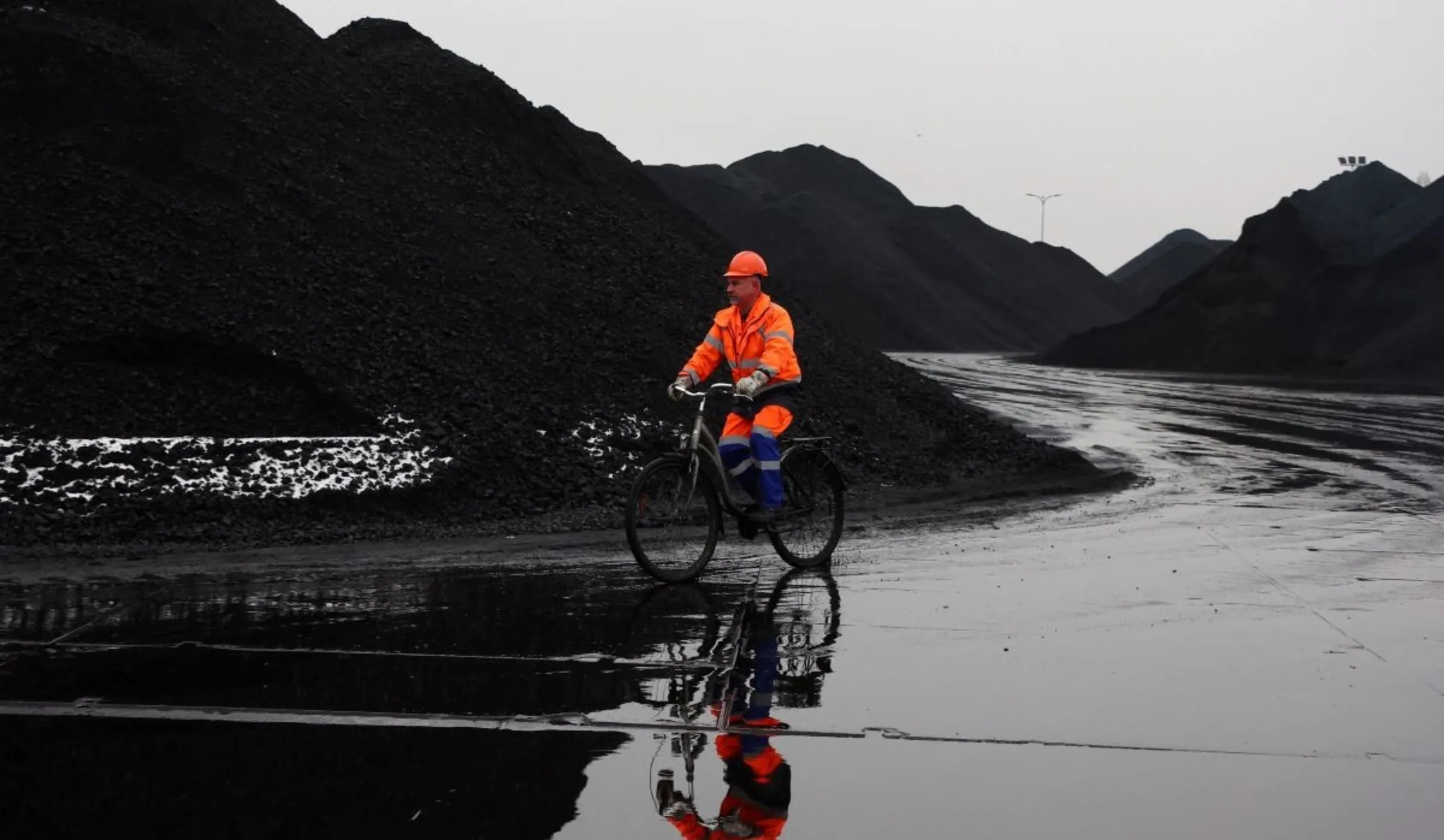How do coal-fired power plants help drive climate change?

A man rides a bike through the coal storage in Port Gdanski Eksploatacja, Gdansk, Poland, December 5, 2022. REUTERS/Kacper Pempel
What’s the context?
Success at COP29 hinges on China and India, but there is still time to switch from coal and save the planet, experts say
- Global coal use expected to peak this year
- China and India have majority of worst-polluting coal plants
- Many European countries have phased out coal completely
BRUSSELS - Coal has powered the world's factories, heated homes and fuelled economies for two centuries and it is still widely used to generate electricity despite global promises to kick the habit and save the climate.
But coal is the most carbon-intensive fossil fuel and a big emitter of planet-warming carbon dioxide.
At U.N. COP29 climate talks in Azerbaijan on Tuesday, the Coal Transition Commission, chaired by France and Indonesia, published its first report on how to finance, accelerate and scale up the move from coal to clean energy.
French Energy Minister Agnès Pannier-Runacher, said the report laid out a clear path towards raising the billions needed for the transition so that "no country has to choose between fighting poverty and fighting climate change".
Coal use must fall by 80% from 2010 levels by 2030 to meet the global aim to hold warming to within 1.5 degrees Celsius (2.7 Fahrenheit) above pre-industrial times, in line with the 2016 Paris climate agreement, according to the U.N. Intergovernmental Panel on Climate Change.
Here's what you need to know about burning coal, how it affects climate change and which countries are phasing out coal-fired plants.
Why is burning coal so bad for the planet?
Burning coal produces large quantities of polluting emissions that contribute to respiratory illnesses.
It also releases carbon dioxide, which traps heat in the atmosphere, leading to climate change and impacts ranging from drought to wildfires, floods to tropical storms.
The power sector must be completely decarbonised in advanced economies by 2035, and worldwide by 2040, to keep temperature rises within 1.5C, the International Energy Agency (IEA) says.
Yet every year, about 15.5 billion metric tons of carbon dioxide are emitted into the atmosphere by coal power stations.
Which countries use the most coal energy and why?
While coal use is gradually falling, Russia's 2022 invasion of Ukraine led to global demand rising to record highs.
More than half the world's top 100 polluting power plants are in China and India, according to satellite data from Climate Trace, an organisation that tracks greenhouse gas emissions.
China is expected to reach peak coal in 2025, but has pledged to wind down its use by 2030, but India has no plans to retire coal plants before that year.
Shutting an industry that employs hundreds of thousands of workers, in both mines and plants, is costly and complex.
Solutions for financing such a big transition include the Asian Development Bank's Energy Transition Mechanism and the European Union's Just Transition Fund.
But more money is needed to support developing countries, say climate finance analysts.

A media reporter uses his camera at an underground coalface where Huawei 5G base stations are deployed to support communication and remote control, at Xiaobaodang Coal Mine in Shenmu of Yulin city, Shaanxi province, China, April 26, 2023. REUTERS/Tingshu Wang
A media reporter uses his camera at an underground coalface where Huawei 5G base stations are deployed to support communication and remote control, at Xiaobaodang Coal Mine in Shenmu of Yulin city, Shaanxi province, China, April 26, 2023. REUTERS/Tingshu Wang
Which countries have managed to quit coal power?
Many European countries have phased out coal power completely.
Greece and Britain were the fastest, followed by Denmark, Spain, Portugal, Romania and Germany, according to the World Resources Institute.
Outside Europe, the fastest reductions were in the United States, Israel and Chile.
According to the IEA, ramping up renewables, improving energy efficiency, cutting methane emissions and increasing electrification with new technologies could deliver more than 80% of the drop in emissions needed by 2030.
Countries with the quickest coal exit plans generally have high incomes, small populations, lower electricity demands and relied on coal imports and ageing power plants.
But even countries with large coal mining sectors, like Greece and the United States, were able to reduce coal power.
What is a just transition?
A just transition would ensure that workers and affected communities do not pay an excessive price as their nations switch to a future free of fossil fuels.
The International Labour Organization defines it as "greening the economy" in a fair and inclusive way, and a switch that spawns job opportunities.
One example is via financial support.
For example, the EU is due to pay Poland 3.85 billion euros ($4 billion), the largest slice of the bloc's 17-billion-euro ($19-billion) Just Transition Fund.
The fund aims to support people most affected with retraining in renewable energy, compensation, and financial lifelines to coal-rich regions.
This article was updated on November 12, 2024 to include a new report from the Coal Transmission Commission.
(Reporting by Joanna Gill; Editing by Lyndsay Griffiths.)
Context is powered by the Thomson Reuters Foundation Newsroom.
Our Standards: Thomson Reuters Trust Principles
Tags
- Clean power
- Fossil fuels
- Net-zero















